
THREAT & RISK ASSESSMENT BRIEF UPDATE
Brief Update No 25/08 Date: 07 Mar 2025
STATEMENT
This document has been approved for distribution by Sea Guardian S.G. Ltd / Operations Department. The provided Intel and information derive from open sources, the Institute for the Study of War (ISW), the Joint Maritime Information Center (JMIC) and United Kingdom Maritime Trade Operations (UKMTO) respective WebPages and products. All rights reserved. No part of this Risk Assessment may be reproduced in any form: electronic, mechanical, or other means without written permission by Sea Guardian S.G. Ltd. Under no Circumstances can Sea Guardian S.G. Ltd be held responsible for any loss or damage caused by a reader’s reliance on information obtained by this Assessment.
Objectives
The purpose of this brief is to provide the Maritime Industry and the Security Stakeholders with:
- Major maritime security incident summary and analysis for the time period 25 Feb – 05 Mar 2025
- Threat assessment updates concerning military operations – terrorism – piracy and also cargo theft, smuggling, stowaways
- Overview of risk assessment and relevant information, in order to support operational planning

RECENT KEY DEVELOPMENTS
- On Feb 25, Russian and U.S. diplomats met in Turkey for talks to resolve disputes over the work of their embassies in Washington and Moscow, respectively, in a first test of their ability to redefine broader relationships and work to end the war in Ukraine. The closed-door meeting, held by Russian and U.S. officials at the U.S. consular residence in Istanbul is the second meeting between representatives of the two countries, following a first on Feb 18 in Saudi Arabia.
- On Feb 25, Hezbollah announced that it will give a vote of confidence to Lebanon’s new government, which has repeatedly pledged that the state must have a monopoly on arms.
- On Feb 26, Members of the United Nations Security Council expressed concern about the establishment of a parallel government by paramilitaries in Sudan, while Kenya, faced with allegations from Khartoum, categorically denied recognizing “any” such “entity”. These paramilitaries and their allies signed a few days ago in Nairobi the “founding charter” of a parallel government in the African country, where war has been raging since mid-April 2023. The development sparked diplomatic tension between Sudan’s de facto government and Kenya’s. The war, triggered by disagreements between two generals over the terms of respective armed groups’ integration into the army, tore the country to pieces. The army controls its eastern and northern parts, while the paramilitaries dominate almost Darfur’s entire region (west) and sectors in the south.
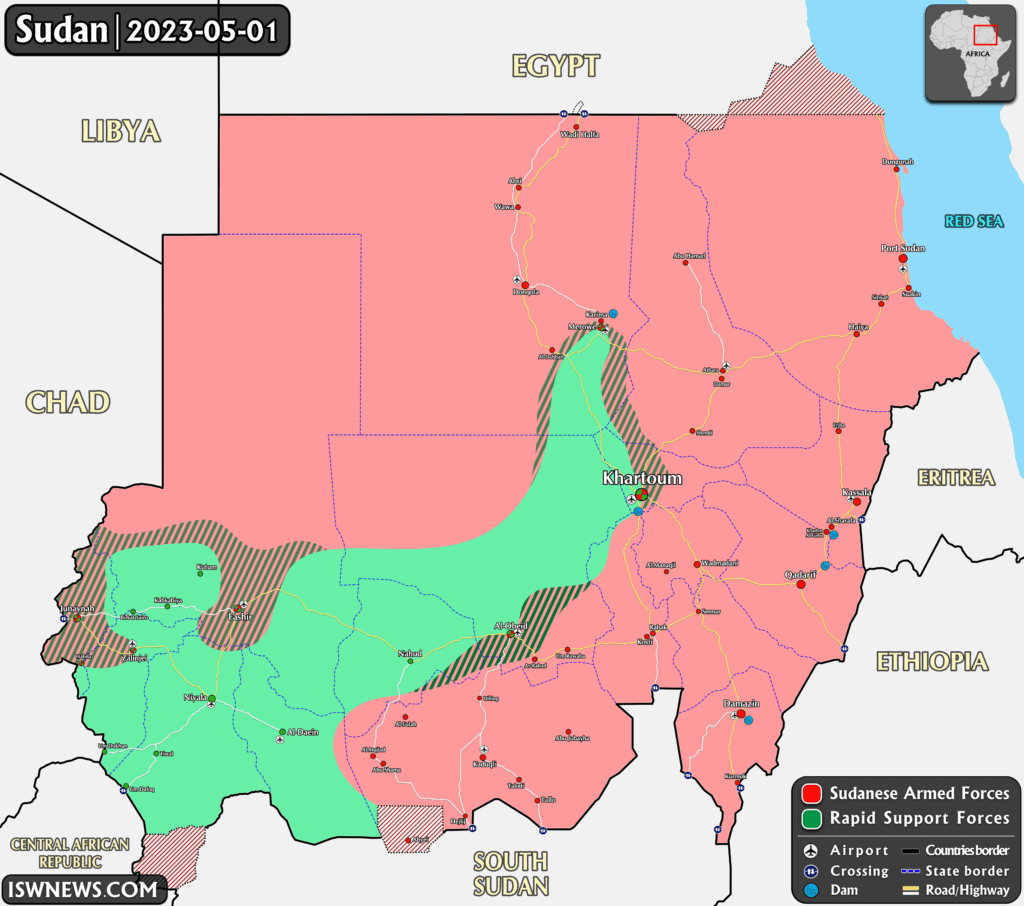
- On Feb 27, Hamas handed over to the International Committee of the Red Cross and Red Crescent (ICRC) the bodies of four Israeli hostages kidnapped during the October 7, 2023 raid and held in the Gaza Strip ever since, as part of the first phase of the ceasefire agreement. Following this, Israel released 643 Palestinians that was postponed on Feb 22.
- On Feb 27, Israeli media reported that Israeli envoys went to Cairo to discuss the second phase of the ceasefire with mediators from Egypt, Qatar and the US. On the same day the Egyptian government announced that:
“The parties concerned have begun intensive discussions to consider the next phases of the ceasefire agreement as part of ongoing efforts to guarantee the implementation of the agreements concluded”. - On Feb 27, in a groundbreaking move after more than 40 years of armed conflict, Abdullah Öcalan, the jailed leader of the Kurdish Workers’ Party (PKK), called on rebels Kurds of all organizations to lay down their arms, dissolve the PKK and adopt a political solution to the Kurdish issue in Turkey. Öcalan appeared to be reading his message that brings a twist to the historic Kurdish struggle for independence


- On Feb 27 the Kurdistan Workers’ Party (PKK) executive committee, announced it was declaring a ceasefire with Turkey, ending a 41-year-old war, following its founder and leader Abdullah Öcalan statements.
The committee also stated that “We agree with the content of the appeal and declare that we will respect and implement it”, adding that it hoped Turkey would release Öcalan, who has been held in near-total isolation since 1999, to lead the disarmament process. - On Feb 28, the Syrian Democratic Forces (SDF) commander Mazloum Abdi hailed Abdullah Öcalan’s “historic” call for disarmament and dismantling of the PKK, but clarified that the call was “not related to us in Syria.” He also stated “If there is peace in Turkey, it means there is no excuse for Turkish forces to continue attacking us here in Syria”, adding that Öcalan’s call would have positive consequences in the region.
- On Feb 28, the President of Iraqi Kurdistan’s semi-autonomous region, Nechirvan Barzani, welcomed PKK leader Abdullah Öcalan’s call to disarm and dismantle the movement. For his part, the leader of the Patriotic Union of Kurdistan (PUK), Bafel Talabani, urged all sides to seize this “historic opportunity” to solve problems through peaceful dialogue.
- On Feb 28, the public standoff between U.S. President Donald Trump and his Ukrainian counterpart Volodymyr Zelensky at the White House exposed a deepening rift in Washington’s relations with Kiev, raising questions about what lies ahead, with Moscow boasting and Europe watching in bewilderment. Tensions had been rising for several weeks between the US President and the Ukrainian leader.
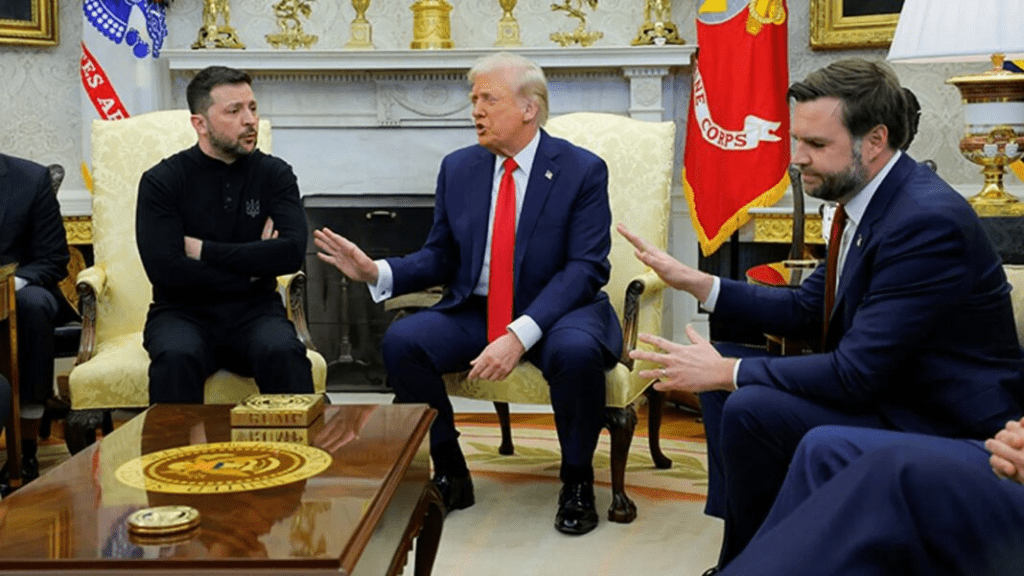
- On Feb 28, the US approved the sale of $3 billion worth of ammunition, excavators and other equipment to Israel. US Secretary of State Marco Rubio has approved the sale to Israel, stating that the sale “will improve Israel’s ability to counter current and future threats, strengthen defenses on its territory, and serve as a deterrent.”
- On Feb 28 Israeli, Qatari and US negotiators conducted in Cairo “intensive talks” on the second phase of the ceasefire agreement in the Gaza Strip, which theoretically starts on Mar 01 and will bring a definitive end to the war, but there is still uncertainty about whether and when it will be implemented.
- On Feb 28, the spokesman for Turkey’s ruling Justice and Development Party (AKP), Omer Celik, stated that all Kurdish fighters in Iraq and Syria, including the Syrian Democratic Forces (SDF), must lay down their arms following PKK leader Abdullah Öcalan’s call for disarmament. The People’s Protection Units (YPG), the spearhead of the Syrian Kurds, replied that Öcalan’s message did not concern them.
- On Feb 28, Egyptian sources stated that Israel’s delegation having travelled to Cairo to discuss the second phase of the ceasefire agreement with Hamas in the Gaza Strip, is seeking to extend the first phase by 42 days.However, Hamas has openly disagreed with Israel’s extension plan and wants talks to begin the second phase of the ceasefire to go ahead. By the end of the day there were no signs of an agreement in Cairo, and the Hamas delegation has not been seen. The original agreement contains an article providing for the automatic extension of the first phase for as long as talks on the second last. Experts say that the most likely scenario – and Israel’s preferred one – would be for an extension of the first phase of the ceasefire.
- On Feb 28, the Turkish President Recep Tayyip Erdogan, following Öcalan’s appeal and the PPK ceasefire declaration, stated that this is a “historic step” as well as an “opportunity” for Turkey, and “warned that Turkey would resume military operations against PKK if it fails its promises to uphold the ceasefire or attempts to delay disarmament.
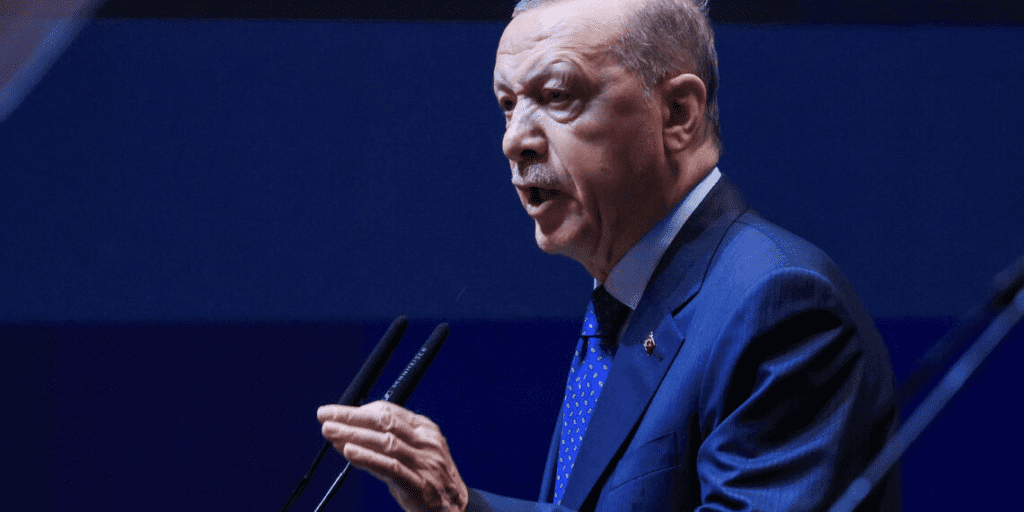
- On Mar 01, the Israeli Prime Minister Benjamin Netanyahu issued an ultimatum to the Interim Government of Syria, stating that “we will not allow HTS forces or the new Syrian army to enter the area south of Damascus”. By doing so Netanyahu is also trying to push its limits on Turkey, which has publicly pledged support for the new regime.
- On Mar 01 the first phase of the ceasefire between Israel and Hamas in the Gaza Strip ended, but so far negotiations on the next stage, which should have started on the same day, have not yet produced a result.
The second phase of this fragile ceasefire – supported by the US, Qatar and Egypt and after months of arduous negotiations – includes the release of the last hostages of Hamas and several hundred Palestinian prisoners in Israel. The third phase will be dedicated to the reconstruction of the Gaza Strip, with the UN estimating the cost of this project at more than €53 billion. - On Mar 01 Hamas Spokesman, Hazem Qassem, stated that there are no talks currently in Gaza on a second phase of the ceasefire and that Hamas does not agree with Israel’s “formulation” of an extension of the first phase. He also called on the international community to put pressure on Israel “to immediately begin the second phase of the agreement without delays and hesitations”.
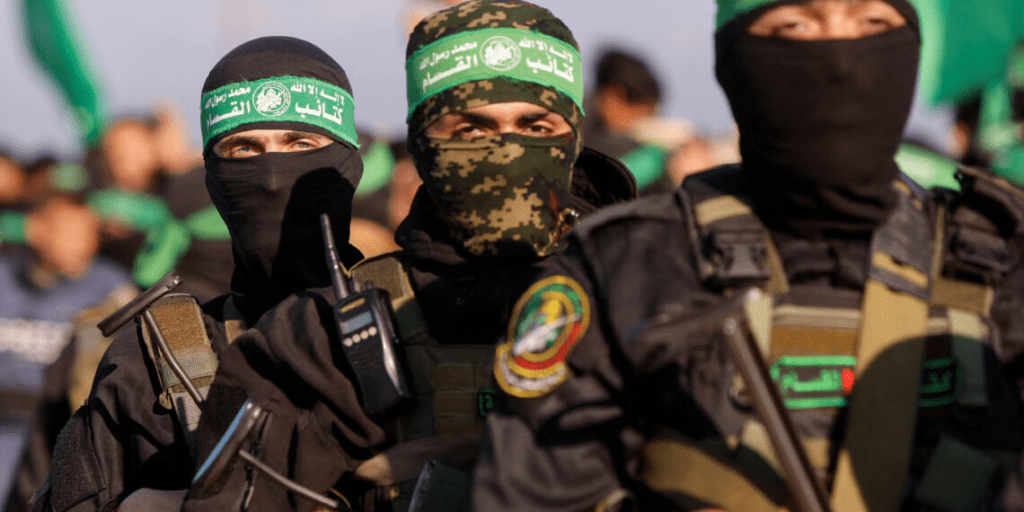
- On Mar 01, the Israeli Defense Minister Israel Katz threatened with military intervention in Syria against Damascus forces “if the regime harms the Druze community.” Already the IDF is ordered to “prepare to defend” Jaramana, a city located on the outskirts of Damascus whose majority residents are Druze.
- On Mar 02, the Israeli Prime Minister Benjamin Netanyahu announced his decision to cut off humanitarian aid to the Gaza Strip amid disagreements with Hamas over how to continue the fragile ceasefire, in an effort to force Hamas to accept the conditions set by Israel for the second phase of the ceasefire agreement.
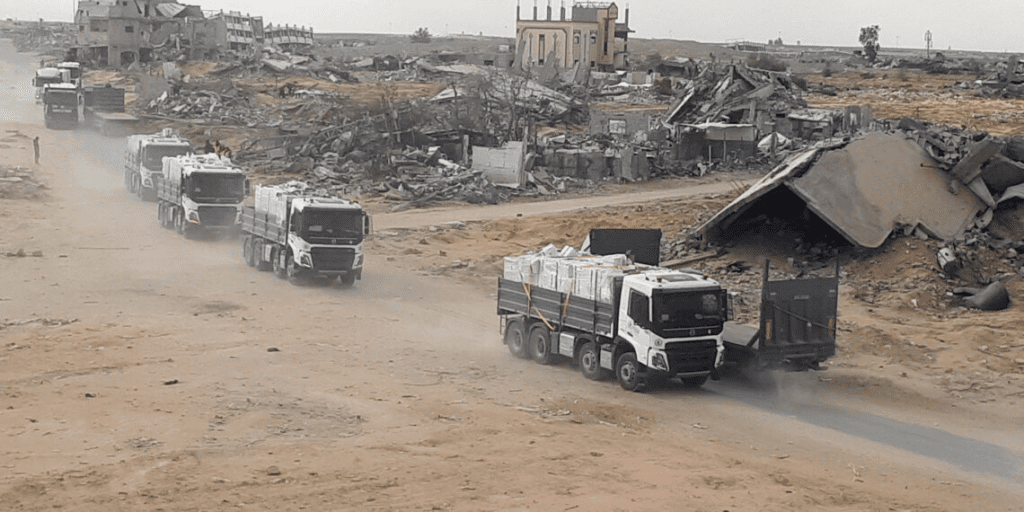

- On Mar 02, the Egyptian Foreign Minister Badr Abdelati said that the Gaza reconstruction plan, which will cost $53 billion, would ensure Palestinians remain on their territory had been drawn up and would be presented to an emergency Arab conference along with building a commercial port, a technology center and beachfront hotels.
- On Mar 02, Syria’s interim president, Ahmed al-Sharaa, issued a decree setting up a seven-member commission to draft a “constitutional declaration” on the country’s “transition phase” to democracy. However, this effort seems once again to exclude Kurdish parties.He also said that the formation of this commission is in line with the recommendations of the National Dialogue Conference held between Feb 24-25 in Damascus.
- On Mar 02, Russia launched a missile attack to sink a merchant cargo ship amid unconfirmed claims it was carrying British weapons for use by Ukraine. Two Iskander-M ballistic missiles struck the Panamanian-flagged container ship MSC LEVANTE F — reportedly owned by Switzerland — shortly after arriving in Odessa on Mar 01 after making a stop in Turkey. Russian Telegram channels claimed that the vessel was loaded with drones and weaponry that had been collected from a NATO base in Turkey before being transported to Odessa, Ukraine.
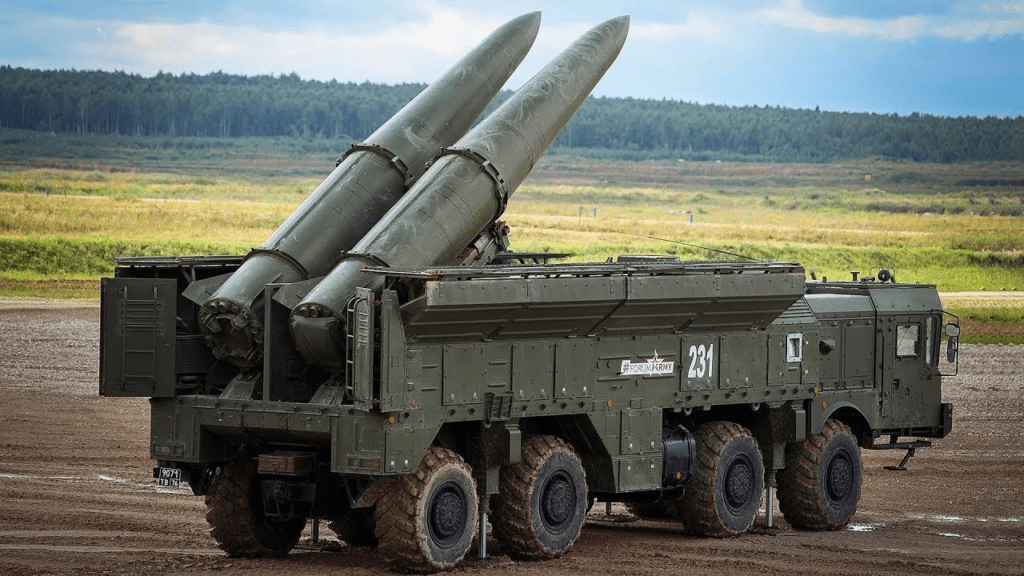
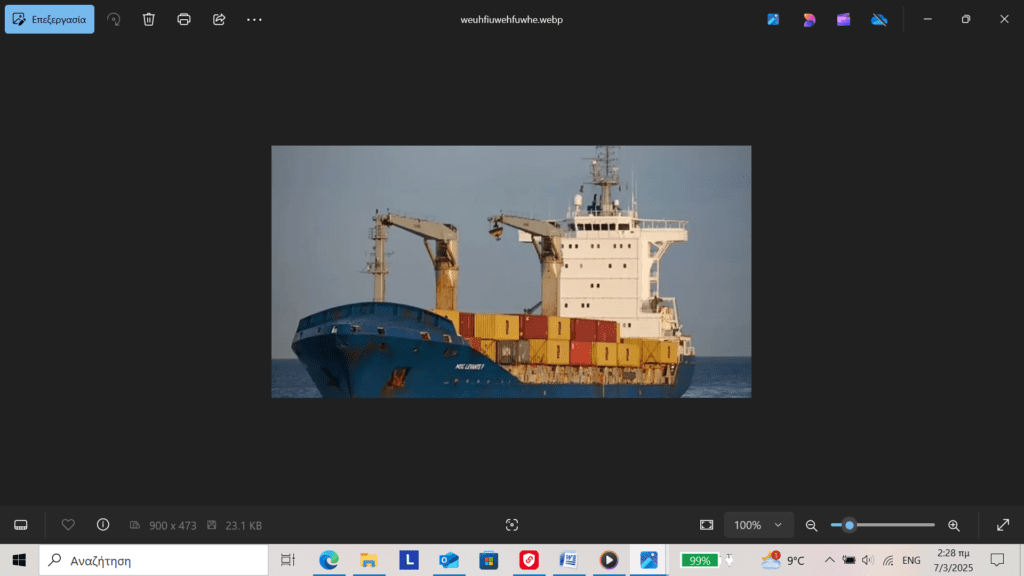
- On Mar 03, Hamas stated that Israel would bear “responsibility” for the fate of hostages held in the Gaza Strip, following its decision to suspend humanitarian aid from the Palestinian enclave amid disagreements over the continuation of the ceasefire.
- On Mar 03, senior Hamas official, Mahmoud Mardawi, stated to Al Jazeera that Hamas will not agree to extend the first phase of a ceasefire agreement in Gaza as requested by the Israeli government. He also stressed that Hamas would release the remaining Israeli hostages only under the terms of the phases of the agreement. However, the agreement contains an article providing for the automatic extension of the first phase for as long as talks on the second last. Israel wants the first phase of the ceasefire to be extended until mid-April, while Hamas is demanding the start of the second phase.
- On Mar 03, a leading member of Hamas, Sami Abu Zuhri, stated to the AFP that disarming Hamas is a “red line”. The group told that after Israel made the continuation of a ceasefire in the Gaza Strip conditional on the “complete demilitarization” of the enclave.
On Mar
03, the Iranian state television reported that Iran’s foreign ministry summoned Turkey’s ambassador to protest against a statement made by Turkish Foreign Minister Hakan Fidan, who publicly warned Tehran not to undermine Syria’s stability. Turkey, for its part, summoned Iran’s chargé d’affaires to Ankara over Tehran’s public criticism of Turkish policy.

- On Mar 03, Israel’s foreign minister, Gideon Saar, stated that Humanitarian aid has become Hamas’ “main source of revenue” in the Gaza Strip, justifying his country’s decision to cut off goods or equipment from entering the Palestinian enclave.
- On Mar 04, the Israeli foreign minister, Gideon Saar, stated that Israel is demanding the “complete demilitarization of the Gaza Strip” in order to proceed with the second phase of a ceasefire agreement with Hamas.
- On Mar 04, the IDF announced that the head of Hamas in the West Bank city of Jenin, Isar Saadi, was neutralized by undercover border police officers and three wanted Palestinians were arrested. The Israeli military over the past week has expanded its “anti-terror operation” in the northern West Bank and other neighborhoods of Jenin.
- On Mar 04 the Israeli Prime Minister Benjamin Netanyahu during a speech in the Knesset, threatened Hamas with consequences he “cannot imagine” if it does not release hostages still held in the Gaza Strip, amid a huge gap in negotiations that would continue the ceasefire agreement. He also said that “It is time to give Gazans the freedom to leave”, while expressing his full support for Donald Trump’s plan to take “control” of the small coastal enclave and expel its population.

On Mar 04, Israel threatened to take military action if interim Syrian government forces move against the Druze on the border with Israel and on the outskirts of Damascus. IDF has put “red” on any presence of HTS forces in southern Syria and at the same time on Mar 03 launched an airstrike in Tartus, targeting new patrol boats which were donated by Turkey.
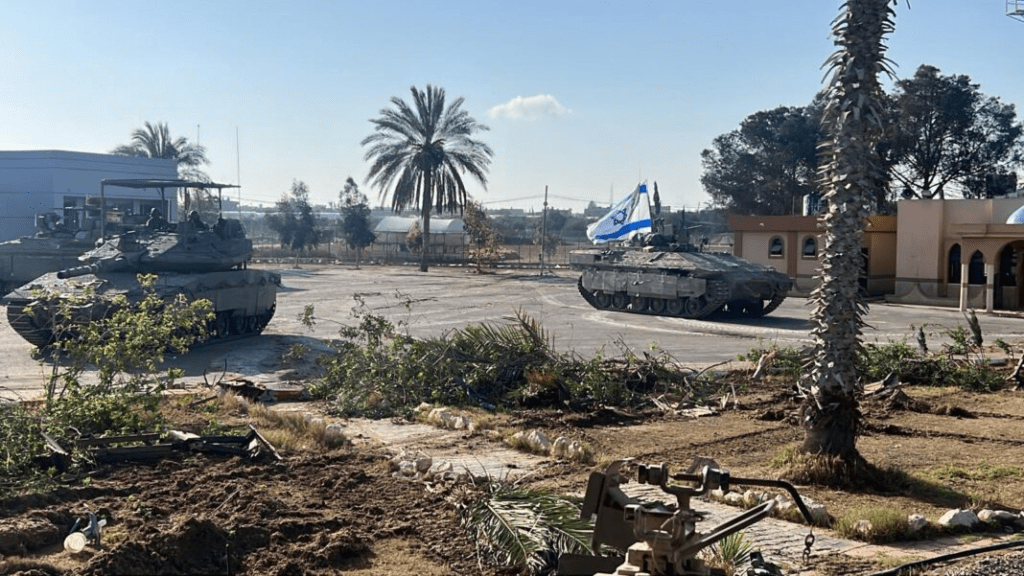

- On Mar 04, the UN Secretary-General Antonio Guterres said that “The agreement on the ceasefire and release of Israeli hostages must be respected. The days ahead are of paramount importance. The sides should make every effort to prevent the collapse of this agreement”.
- On Mar 04, the US Secretary of State, Marco Rubio, announced that Yemen’s Houthi rebels have been officially designated a “foreign terrorist organization – FTO” by the US, about a month after President Donald Trump signed the decree. “The State Department is today delivering on one of President Trump’s first promises, and I am pleased to announce that the Ansar Allah organization, commonly called the Houthis, has been designated a terrorist organization”, he said.Former President Joe Biden had retracted that designation after winning the 2020 election. Trump’s decree stated that the action by the Iranian-backed Houthis “threatens the security of US citizens and military in the Middle East, the security of our closest regional partners, and the stability of international maritime trade” said the executive order.
- On Mar 04, Egypt has unveiled a $53 billion plan to regenerate Gaza over five years based on reconstruction and long-term economic development, according to a document seen by AFP. The plan being discussed at the extraordinary summit of Arab countries in Cairo envisages two phases of reconstruction and proposes the establishment of a fund under international supervision.

- On Mar 05, the Trump administration has rejected the plan for the reconstruction of Gaza, drawn up by Arab states, as the US President insists and supports his own vision, which includes the expulsion of Palestinians and the transformation of the Palestinian enclave into the US-owned “Riviera of the Middle East”. The National Security Council spokesman Brian Hughes stated that “The current proposal does not take into account the reality that Gaza is currently uninhabitable and residents cannot live humanely in territory covered in debris and ammunition”.
- On Mar 05, the European Council President Antonio Costa’s met with Syrian interim President Ahmed al-Sharaa reflecting the EU’s effort to support the transition process in Syria. The EU has already suspended sanctions on Syria in Feb, aiming at boosting economic recovery and stabilization.
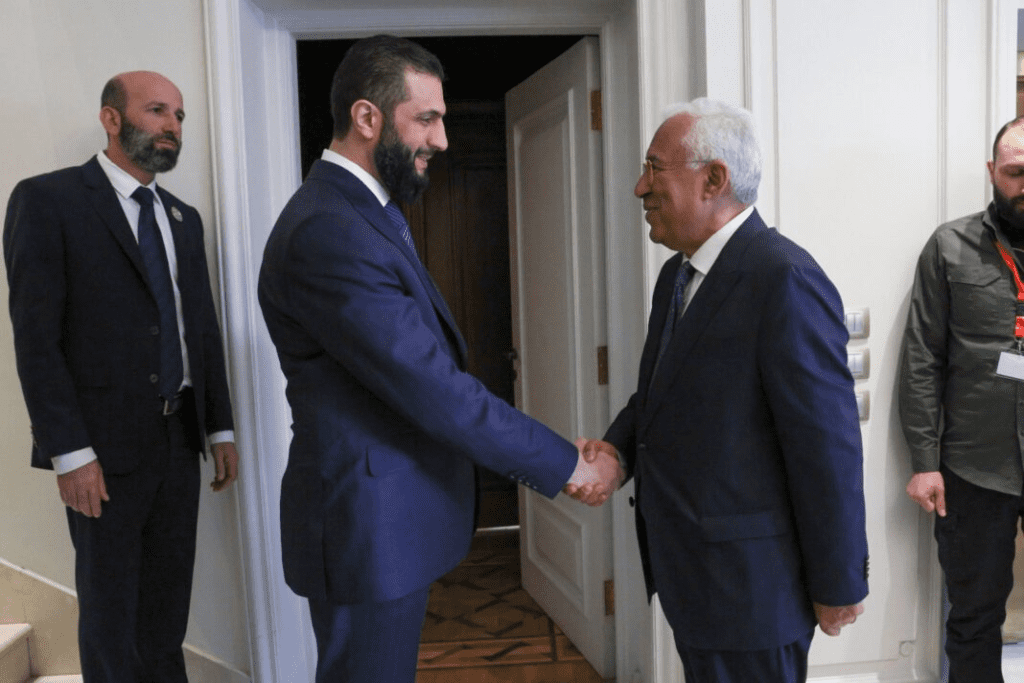
- On Mar 05, according to sources in Reuters, Axios and the Israeli Times of Israel, the US special envoy for hostage affairs Adam Beller has been involved in secret, direct talks with Hamas in recent weeks in Doha. The talks focused on freeing American hostages still held in Gaza but also about a broader agreement to release all the remaining hostages and reach a long-term ceasefire. President Donald Trump’s Middle East envoy Steve Whitkoff plans to return to the region in the coming days to discuss how to extend the first phase of the Gaza ceasefire agreement or move on to phase two.
- On Mar 05, the Israeli Prime Minister Benjamin Netanyahu said to the new head of the Israeli army General Eyal Zamir that he is determined to lead the country to victory. He also stated that: “The results of the war will be of great importance for generations to come, and we are determined to win.”
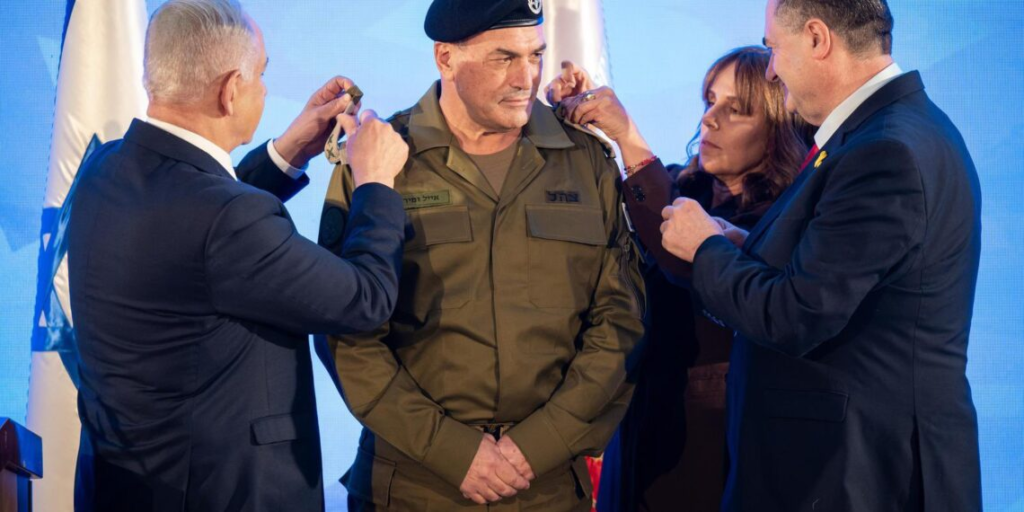

MARITIME SECURITY INCIDENTS: 25 Feb – 05 Mar 251
| INCIDENT No | INCIDENT Type | INCIDENT TIME | INCIDENT DETAILS |
| – | – | – | – |
1 In accordance to JMIC and/or UKMTO sources
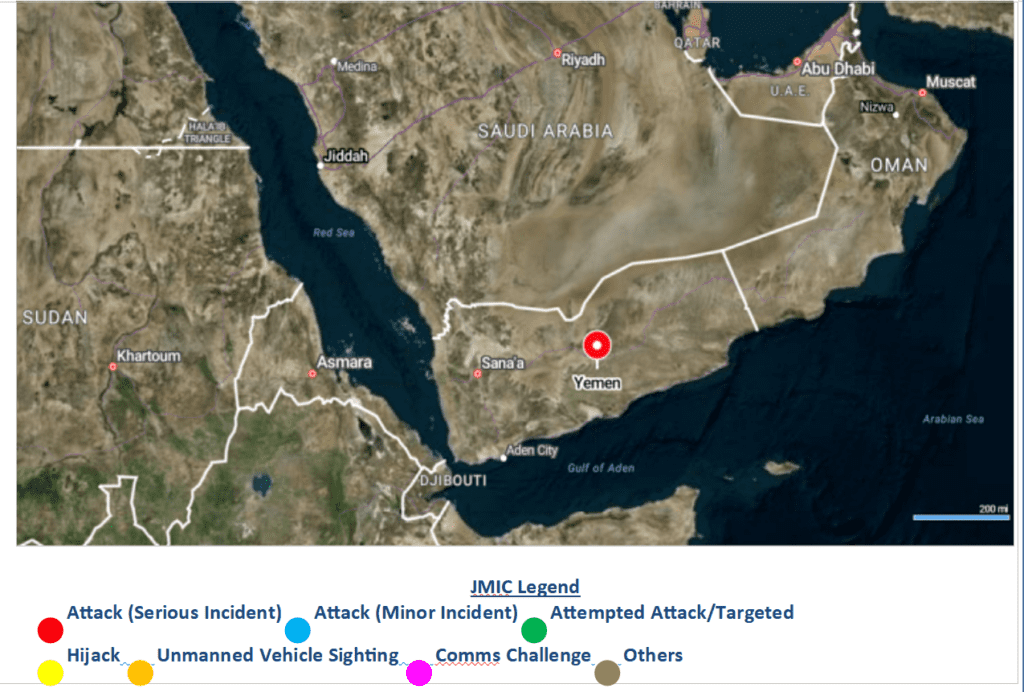
THREAT ASSESSMENT UPDATE:
Military operations – terrorism – piracy and also cargo theft, smuggling, stowaways
Military Operations
- The current status in Syria is added to the general military conflict and unrest that takes place in the Middle East region, affecting also the East Mediterranean Sea. The HTS has become the predominant group and fully controls the interim Syrian government and the new Syrian Armed Forces.
- The Kurdish Workers’ Party (PKK) answering the call of its jailed leader, Abdullah Öcalan, declared a ceasefire after more than 40 years of armed conflict for Kurdish independence within Turkey. PKK is willing to disarm, dissolve itself and adopt a political solution to the Kurdish issue in Turkey.
- The PKK ceasefire does not appear to include the US-backed Syrian Democratic Forces (SDF) currently fighting Turkish and Turkish-backed forces in northern Syria. However, by Mar 01 Turkey and the Turkish-backed Syrian National Army (SNA) have ceased their attacks against SDF positions along northern Syria. It is assessed that Turkey, after successfully pacifying the PKK threat within its borders, will increase its efforts to remove the SDF threat from its southern borders by forcing it to dissolve and integrate to the new Syrian military.
- Syrian armed factions have started to integrate into the new Syrian army and security apparatus. It is unclear how extensive the integration of armed groups across Syria, yet the pace at which this integration occurs has increased over the last weeks. It is also unclear to what extent groups that integrate into the Defense Ministry will subordinate themselves to largely HTS-dominated command structures. However, there are still two main armed groups which are not willing to dissolve and integrate, the Druze militia and the SDF.
- Overall, the ceasefire in Lebanon was maintained even though from time-to-time IDF forces had conducted minor strikes against selected targets within Southern Lebanon. The IDF has withdrawaled from Southern Lebanonwith the exception of 5 specific key outposts and the LAF has backfilled the IDF previous held positions. Hezbollah’s military capabilities and assets in Lebanon remain low and there is no indication of resurgence. In addition, the Lebanese government’s intention to enforce a state monopoly on arms will not only inhibit the rearming of Hezbollah but will gradually lead to the eviction of this organization from Lebanon.
- Overall, the ceasefire in the Gaza Strip is still maintained even though from time-to-time IDF forces conducted minor strikes against selected targets in the area near Khan Younis. The hostage exchange between Israel and Hamas that was part of the first phase of the ceasefire agreement after the intervention of countries mediating the indirect negotiations has been completed. Still Israel is reluctant in proceeding to the second phase of the agreement and seeks to extent the first phase in order to secure the release of all hostages and bodies and the complete demilitarization of the Gaza Strip. Hamas on its side rejects the notion of disarming and leaving Gaza and is using the hostages as leverage for the upcoming negotiations. Even though Israel demands and Hamas notions jeopardize the entire ceasefire agreement, it is assessed that once more the countries mediating the indirect negotiations will intervene and break the stalemate in order to the ceasefire agreement move on to the second phase, by most likely securing the exchange of all hostages and prisoners.
- Both Iranian-backed Iraqi militias and the Houthis which ceased military operations against Israel after the ceasefire in the Gaza Strip, continue to uphold the cease fire and there have been no new attacks or incidents, especially in the Red Sea and the Golf of Aden. Nevertheless, the Houthi threats against Israel, the US and merchant shipping if the ceasefire in Gaza is not respected, they will immediately resume their attacks.
- After the implementation of the ceasefire in the Gaza Strip on Jan 19, the IDF have diverted their attention to operations in the West Bank, against Hamas cells. These operations have increased in intensity over the last few weeks. It is assessed that Israel will push forward its efforts in dislodging Hamas from the West Bank by force.
- Since Jan 19 there have been no US, UK or IAF airstrikes against Yemen.
- The Russian attack against a merchant cargo ship in Odessa has reignited the interest of the global shipping community in the Black Sea and on the front of the war in Ukraine since the last attacks on Ukrainian ports which took place in Oct 24. Back then in view of the increased threat of attacks, the so-called war risks premiums (WRP) for calls at Ukrainian ports increased by 20%-33%, while WRP for Russia remained stable at 0.9%-1% of the value of the ship. It is assessed that over the next period the WRP for calls at Ukrainian ports will be increased even further.
Terrorism – piracy and also cargo theft, smuggling, stowaways
- The reemergence of terrorists group associated with ISIS and Al Qaeda in Syria since Nov 2024, has enhanced the terrorist threat level across the East Mediterranean Sea. Nevertheless, the risk of open conflict between these groups and the HTS has recently forced certain groups to lay down their arms and join with HTS.
- JMIC over the last weeks has received information from regional partners regarding pirate activity off the coast of Somalia and recommends merchant vessels to remain vigilant when transiting these waters and make necessary precautions according to Best Management Practices and industry guidelines, having armed guards onboard.
- On Feb 13, the Greek flagged M/V GAL which was coming from Alexandria, Egypt with destination Bejaia, Algeria due to adverse weather conditions was forced to approach the eastern Libyan coast and anchor. Though contact with Libyan coast guard was established prior anchoring, the ship and its crew were detained by the Libyan coast guard for several days accused of violating the Libyan National Army (LNA) self declared “no sail zone” (NSZ) which was announced by the LNA in December 2015. The ship and its crew were released and allowed to continue their journey only after paying a fine to Libyan authorities. It is assessed that the instability in Libya has spilled over into the maritime domain and already poses a threat to commercial shipping with Merchant Ships being seized even while transiting this self-declared “no sail zones” (NSZ).
RISK ASSESSMENT
East Mediterranean Sea
- The risk of attacks or incidents in the East Mediterranean Sea for the time being is assessed LOW with the exception of all Israeli ports and the Syrian Coastline. Any port call in Israel should be arranged after a direct contact with the Israeli authorities, while it is not clear whether there are still any Syrian authorities or if they fully represent the newly establish interim government.
- Merchant vessels that participate in any way in Russian exports against established sanctions are in danger of being targeted and attacked with limpet mines or other sabotage devices. In addition, an escalation in attacks against merchant shipping around Ukrainian ports and territorial waters is expected over the following period. It is assessed that these threats and attacks will stop only after a ceasefire in Ukraine has been firmly established.
- Terrorist groups and other uncharted armed groups in northern and western Syria pose a threat to the region’s security environment and could potentially be dangerous for merchant shipping security along the Syrian coastline and ports.
- Established factions in eastern and western Libya pose a threat to the region’s maritime security and could potentially be dangerous for merchant shipping security along the Libya coastline and ports.
- It seems that Turkey has succeeded, perhaps even beyond its own expectations, to pacify the Kurdish populations within its borders, to bring an end to a 40-year conflict and to demolish Kurdish Independence aspirations. The PKK’s immediate alignment to Abdullah Öcalan’s call for disarmament and a ceasefire, came as a surprise to all Kurdish populations in the region. It is assessed that over the next period Turkey will attempt to also pacify all these populations (which Turkey reviews as part of the PKK) in Syria, Iraq and Iran in order to achieve its strategic objective of removing any possibility of establishing a state or a self governed semi-autonomous areas of Kurdish origin to its borders.
- Over the last days Turkey and HTS coordinated efforts to coerce the SDF to disarm and be integrated into the HTS-led defense apparatus have begun bearing fruit with at least part of SDF leadership willing to discuss the issue. However it is assessed that the Syrian Democratic Forces (SDF) commander Mazloum Abdi, who has already separated the SDF from the PPK’s decisions, is unlikely to give up the SDF‘s ability to defend Kurdish areas in the near future, unless specific assurances are provided by the US and the Interim Syrian Government that the SDF will retain its existence as a separate block within the future Syrian Defense Ministry.
- It is assessed that SNA and Turkish Armed Forces in Northern Syria will not further assail the SDF forces over the next period in an effort to reassure Kurdish population insecurities in Syria and to deprive from the SDF leadership any pretext for not dissolving and being integrated into the HTS-led defense apparatus. However, should the SDF persist in its views and not give in to Turkey’s plans for Syria it is expected that conflict along northern Syria between Turkish, SNA and SDF forces will reemerge in greater intensity and volume.
- Both the National Dialogue Conference and the seven-member commission appointed to draft a “constitutional declaration” on the country’s “transition phase” to democracy, though designed to provide legitimacy to the political process intended by the interim government and to highlight that it consults a broad swath of Syrians, has ultimately failed its cause by alienating the Kurdish community and along other factions in Syria and also in terms that they are totally aligned with HTS views and notions.
- Turkey, HTS and Interim Syrian Government cooperation is constantly deepening and it is assessed that Turkey has already incorporated Syria into its close allies, as it did with the West Libya GNA government, and has therefore managed to increase its footprint in the region and to further pursue its geopolitical goals. It is assessed that Turkey’s efforts will be awarded with the reconstruction of Syria and the return of 2,5 million Syrian refugees back to Syria.
- It is assessed that the efforts of Turkey to project itself as a “regional power” in the Middle East and North Africa region (MENA), as well as East Africa either through political intervention or military presence, have proved rather successful and are expected to be intensified over the next period.
- Recent HTS-led interim government’s efforts in the southern and western parts of Syria to dissolve former opposition forces and integrate them into the new Syrian Defense Ministry have so far proved successful and have increased its political power. Nevertheless, if they fail to provide a secure geopolitical environment that will provide security and some sort of autonomy for the Kurdish and Druze communities, it will likely be difficult to finally reach to an agreement which will dissolve these militias and integrate them into the Syrian armed Forces over the following months. There is still risk for Syria to become another “failed state” in the MENA region, following the footsteps of Libya and Iraq.
- The international community is already engaging and interacting with the Interim government in Syria and sanctions are gradually being lifted. However, the EU and most countries remain uncertain and intend to wait for this government to show its true intentions on how to build and run the future Syrian State, and also on how they interact with other countries. Over the last two months, the interim Syrian Government has successfully established lines of communication and reinvigorated diplomatic relations with Turkey, most Arab states, the US and EU. It is assessed that relations with Turkey, Qatar and Saudi Arabia are already at a high level, with the rest of the Arab states following at a lower level. Egypt considers HTS as a potential threat due to its ties with Turkey and the Muslim Brotherhood and has reluctantly invited Syria back to the Arab League Council in an effort to remove Syria from Turkey’s foothold and align it with Arab Nations interests.
- It has become obvious that for the time being, US participation in the formation of the new Syria is not a priority for Trump and it is assessed that the US President will eventually withdraw any US forces currently stationed in Syria. A US withdrawal from Syria however, would very likely create opportunities for ISIS to rebuild itself in particular in northeastern Syria.
- During last week’s meeting in the White House with the President of Ukraine, the International Community witnessed first handed the sheer determination and absolute resolve of the US President Donald Trump in promoting and implementing agreements according to his designs. Taking this into account it is assessed that the US President’s “bold” proposed plan for US to take control of the Gaza Strip in order to be rebuilt and the relocation of Palestinians to other Arab countries, even though it has been rejected by most of the Arab countries, will gradually in the long term begin to represent the only plausible solution to the geopolitical stalemate in the Middle East. It is also assessed that the Trump administration will find little difficulty in applying the “required” pressure to the Arab states and especially to Egypt, Saudi Arabia and Jordan in order to advance US goals in the region.
- It is assessed that the recent phone call between Trump and Putin, the visits of the US Secretary of State in Israel and the Arab Countries of the region and finally the forthcoming visits of the US President’s special envoy, Steve Whitkoff at the Middle East region later this week, suggest that the US will undoubtedly increase their efforts in putting an end to the Israeli-Hamas-Palestinian Authority conflict over the Gaza Strip and will try to establish a lasting solution that will bring peace and stability in the region before turning its full attention to Iran and its remaining proxies.
- It is assessed that Israel will certainly have a pivotal role both in mitigating Turkey’s ambitions, influence and overall foothold in the new Syria on behalf of US, and generally in promoting US objectives in the region. Over the next period it is also expected that the influence of Saudi Arabia in Syria and the overall region will be elevated, acting as a secondary pillar for US objectives and policies.
- It has become clear that Russia has lost its bases in Syria for good. It is assessed that for the time being, Russia will move its forces from Syria back to Russian territory in order to reinforce the operations against Ukraine. However, it is expected that in the long-term Russia will try to establish a new naval and air base into an East Libya area (controlled by General Haftar) and also in Soudan, in order to assure its presence in the region.
- It is assessed that further Israeli efforts to neutralize Syria as a potential threat, to defend the friendly Druze community and to establish a safe zone during the next weeks, could lead to a new escalation in tensions between Israel and Turkey over the future of Syria, since their interests are colliding. It is highly likely that the US will try to play a mediator role to improve the relations between Turkey and Israel, avoiding any further tensions.
- In Lebanon over the next period, it is assessed that Hezbollah military will be gradually but steadily evicted by the Lebanese army (LAF) which has backfilled IDF previous held positions according to the agreement that followed the ceasefire period which ended on Feb 18. The agreement which permits IDF to maintain control of 5 key outposts within Lebanon will provide the future base for Israel to come to terms with the new Lebanon leadership. Hezbollah requires time and support from Iran to rebuild and reorganize. It is assessed that under current circumstances in the region it is highly unlikely in the near future for Hezbollah to regain its military capabilities, or to assume significant operations against Israeli forces in Lebanon and Syria, or against Israeli territory.
- Hamas will likely use the ceasefire in Gaza and the return of Gazians to Northern Gaza to re-organize and replenish its forces and move cells around the Gaza Strip without Israeli retaliation. It is assessed that Hamas can only achieve limited reorganization and will be unable to regenerate itself during this period or to seriously impede the IDF if the ceasefire collapses. Nevertheless, the return of Gazans to the northern Gaza Strip will make it difficult for the IDF to conduct operations with the same intensity as it did before the ceasefire.
- While the ceasefire between Israel and Hamas has been in place since Jan 19, recent events proved once again how fragile it is. Israeli efforts to extent the first phase in order to secure the release of all hostages and bodies prior proceeding to the second phase of the agreement and to raise the issue of Hamas eviction and the complete demilitarization of the Gaza Strip and the subsequent rejections over these by Hamas, have once more jeopardized the overall ceasefire agreement. Still, it is assessed that once again countries mediating indirect negotiations will again intervene in order to finalize the first phase of the ceasefire agreement and to move on to the second phase. However, it is assessed that the issue of Hamas eviction and the complete demilitarization of the Gaza Strip will prove to be the hardest to tackle before reaching to the third phase of the ceasefire agreement.
- On the other hand, the Israeli Prime Minister Benjamin Netanyahu with the full support of the US has openly declared his willingness to order the IDF to resume military operations in the Gaza Strip if the agreements are not kept and also to intensify operations in the West Bank.
- The Houthi threats of immediately resuming attacks against Israel and merchant shipping in the Red Sea and Golf of Aden if the agreements are not kept, are always looming ominously every time that the ceasefire between Israel and Hamas in Gaza is put in jeopardy.
Suez Canal – Northern Red Sea
- The risk of attacks or incidents at the Suez Canal and the Northern Red Sea for the time being is assessed LOW.
- Cessation of kinetic retaliations between Yemen and Israel due to the ceasefire in Gaza has significantly decreased concern for collateral damage on merchant vessels in the vicinity of Eilat port and while transiting the Gulf of Aqaba.
- The risk of attacks or incidents in Eilat port for non-Israeli vessels is assessed LOW provided that there will be no problems or incidents in implementing all phases of the Israel-Hamas ceasefire agreement, nor any attacks against the Houthis in Yemen. In case of renewed hostilities between Israel and the Houthis, due to recent Hamas and Israeli deviations from the ceasefire agreements, the risk of attacks or incidents against merchant vessels will automatically revert to HIGH.
- The risk for merchant shipping transiting the Gulf of Aqaba if they are heading for Jordanian, Egyptian or Saudi Arabian ports and with no Israeli, US or UK ties, is assessed to be LOW, since the Houthis are avoiding to attack any Arab state port in the region.
- Numerous shipping agencies indicate that there has been a small increase in the number of merchant vessels which transited through the Suez Canal with 987 vessels from Dec 2024 rising to 1.033 vessels for Jan 2025 and that the trend is to slowly increase. It is assessed, provided that there will be no more future deviations from the ceasefire agreements and that there will be not issues with the implementation of the second phase of the Israel-Hamas ceasefire agreement, that by late Mar 2025 there will be a substantial increase in the volume of ships transiting the region.
Bab-el-Mandeb Straits – Southern Rea Sea
- The southernmost part of the Rea Sea and the Bab-el-Mandeb Strait are still assessed to be the most hazardous areas for international shipping, with no significant incident occurring during last period.
- After the Israel-Hamas ceasefire agreement the risk of attacks or incidents against non-Israeli ships is assessed LOW provided that there will be no problems or incidents in implementing all phases of the Israel-Hamas ceasefire agreement, nor any attacks against the Houthis in Yemen.
- In case of renewed hostilities between Israel and the Houthis due to deviations from the ceasefire agreements, the risk of attacks or incidents against merchant vessels will automatically revert to HIGH.
- Despite the recent de-escalation, it is assessed that the Houthis will continue to monitor vessels with multiple layers of indirect associations to Israel, US or UK in order to be targeted and attacked at a short notice, if the situation escalates again. Maritime industry stakeholders should take into account such associations when conducting threat and risk assessments.
- It is assessed that the US and UK airstrike campaign against Yemen will continue to be paused while the naval units of the USN and the RN along with the warships of international/EU maritime Operations “PROSPERITY GUARDIAN” and “ASPIDES”, will continue patrolling the area on high readiness.
Gulf of Aden
- The eastern part of the Gulf of Aden is still assessed to be the one of the most hazardous areas for international shipping, with no significant incident occurring during last period.
- After the Israel-Hamas ceasefire agreement the risk of attacks or incidents against non-Israeli ships is assessed LOW, provided that there will be no problems or incidents in implementing all phases of the Israel-Hamas ceasefire agreement nor any attacks against the Houthis in Yemen.
- For the rest part of the Gulf of Aden the risk of attacks or incidents is assessed LOW.
- It is assessed that the naval units of the USN and the RN along with the warships of international maritime Operation “PROSPERITY GUARDIAN” and “EU ASPIDES” will continue patrolling the area in high readiness.
- Recent information from regional partners regarding piracy activity off the coast of Somalia is assessed to be alarming and should move the shipping industry to enhance its security posture.
Arabian Sea – Gulf of Oman
- The risk of attacks or incidents at the Arabian Sea and the Gulf of Oman for the time being is assessed LOW.
Hormuz Strait – Persian Gulf
- The risk of attacks or incidents at the Hormuz Straits and the Persian Gulf for the time being is assessed LOW.
- Nevertheless, the announcement and uncertainties arising from the reactivation of the “Maximum Pressure Campaign” towards Iran by the US, could escalate tensions in the region and potentially lead to incidents impacting the maritime environment. The specific issue needs a close monitoring of the situation.
OVERALL ASSESSMENT
- Over the following period, US President Donald Trump will pursue the next three US goals that will reshape geopolitically the region. First to end the war in Gaza, second to bring an end to Hamas and Hezbollah and third to complete the “Abraham Accords” which he considers to be his own vision and work. In this context, Israel, Saudi Arabia and Russia will be used as leverage in order to push the Arab Countries and Iran along with its proxies to settle with US objectives and goals for the region.
- Syria has begun to reemerge as a sovereign state in the region but still the way ahead is full of uncertainty.
- Turkey has finally achieved in its goal to pacify the PKK threat and to demolish Kurdish Independence aspirations within its borders. However, the next step of pacifying every other Kurdish organization and militia in its neighboring countries and especially in Syria, is rather challenging.
- Over the last period the respective foothold of both Turkey and Israel over Syria has increased bringing ever closer these two countries in a possible standoff over supremacy in the region.
- Since Jan 19, 2025 and the pause of the Houthis’ disruptive campaign against merchant shipping in the Red Sea, the stalemate in maritime security and freedom of navigation for merchant shipping in the region has been gradually lifted. It is assessed that as the ceasefire agreement between Israel and Hamas is proceeding and vessels and infrastructure remain untargeted, improved stability is expected.
- However, this pause in the disruption of the flow of merchant shipping through the Suez Canal and the Red Sea is quite precarious and should not be deemed rigid and solid in the mid or long term. It is assessed that even minor deviations from the ceasefire agreement could lead to hostilities, which would subsequently prompt the Houthis to redirect threats and attacks against international shipping at a short notice. The negotiations on the second phase are expected to be difficult. Israel demands the complete demilitarization of Gaza and the elimination of Hamas. The Palestinian group insists it will remain in the enclave. In addition, the matter of upholding and implementing all phases of the Israel-Hamas ceasefire agreement by all key players in the region smoothly and without any problems or incidents, is a huge challenge on its own.
- It is assessed that the recent Houthi statements will discourage global firms and ship-owners to re-enter in volume the Red Sea at all types of ships and cargos and over the next months, but still already there has been an increase in the overall number of ships (especially container ships) transiting through the Suez Canal.
- The current situation around the seas of the Arabic Peninsula will continue the weeks to come to create risks for the shipping industry and will deter vessels other than container ships to cross the Red Sea and the Suez Canal.
- It is assessed that in the short term, Houthis might resume with their campaign against Israeli merchant shipping in the Red Sea through invoking their pretext of supporting the Palestinian struggle and forcing Israel to uphold the agreements.
- It is also assessed that the risk of entering Israeli ports is now LOW since the Houthis pledged to stop attacking Israeli territory.
- The matter of returning the flow of merchant shipping through the region to its previous volume which is linked with the progression of US efforts in maintaining the overall stability and security in the region will be determined over the next weeks. Stock markets globally are emitting positive signs for trade and economy, as the policy of the newly elected President of the US is rapidly unfolding.


Sea Guardian S.G. Ltd / Intel Department (www.sguardian.com / +30 6944373465)
can support your operational planning, assist in determining the risk assessment and provide assistance in decision making by producing tailored made assessments upon request on ports in the region, on routes, on cargos and specific merchant vessels. You can refer to our previous Threat & Risk assessment analysis briefs for more information and background analysis on the events and situation in the region.
____
Viewers can see here below the previous report:





